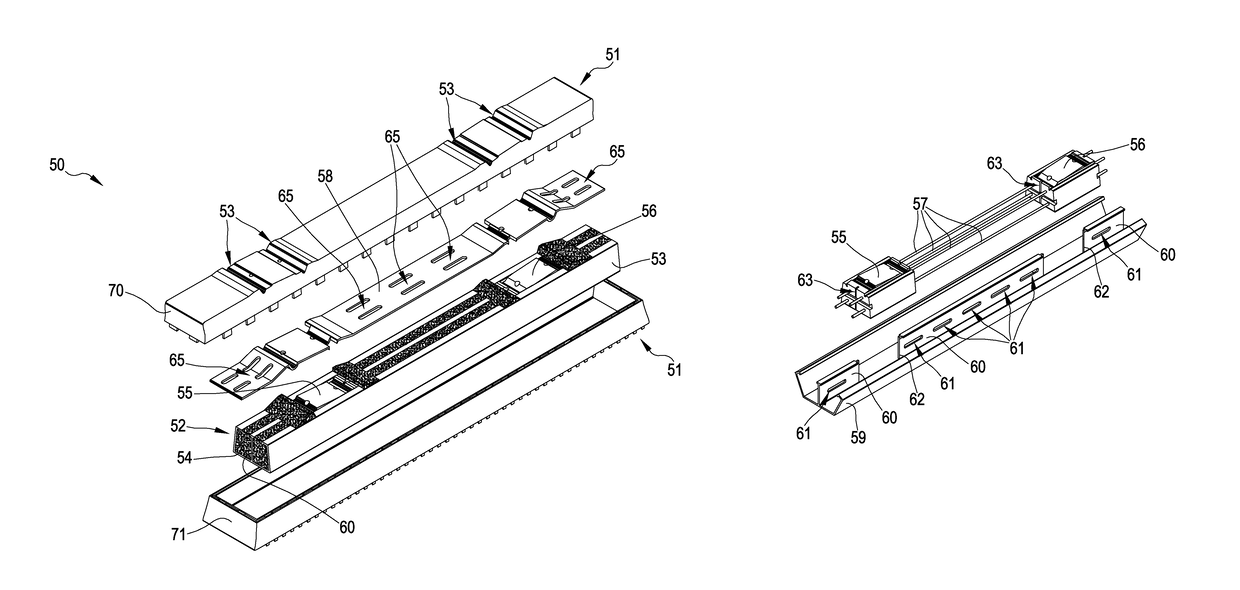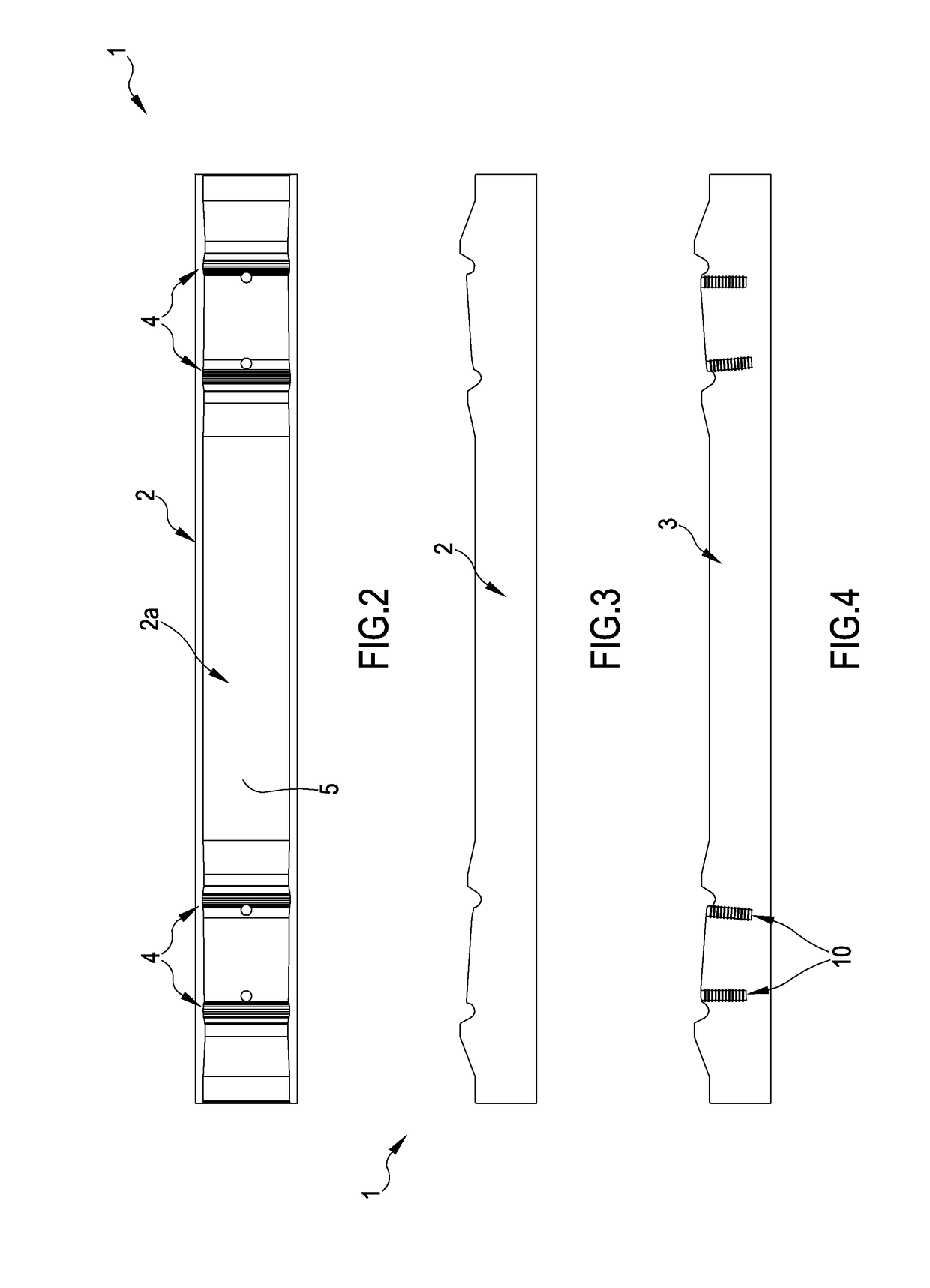Composite railway sleeper
- Summary
- Abstract
- Description
- Claims
- Application Information
AI Technical Summary
Benefits of technology
Problems solved by technology
Method used
Image
Examples
Embodiment Construction
[0099]The composite railway sleeper of the invention is illustrated in its basic version in FIG. 1, where it is globally numbered with 1.
[0100]As it can be seen, the composite railway sleeper 1 includes:
[0101]an outer coating shell 2 made of composite plastic material;
[0102]a shaped structural core 3, made of a material comprising only concrete or prestressed reinforced concrete) contained within the outer coating shell 2.
[0103]In accordance with the invention, the outer coating shell 2 presents in the upper outer face 2a two distinct and opposite groups of grooves 4 suitable to receive the angular guide plates belonging to pre-assembled elastic type fastening systems (so-called “W” type) for the connection of two respective rails R with the railway sleeper.
[0104]In particular, the two distinct and opposite groups of grooves 4 are symmetrically arranged each other with respect to the transverse symmetry axis Y of the outer coating shell 2.
[0105]Preferably, the composite plastic mate...
PUM
 Login to View More
Login to View More Abstract
Description
Claims
Application Information
 Login to View More
Login to View More - R&D
- Intellectual Property
- Life Sciences
- Materials
- Tech Scout
- Unparalleled Data Quality
- Higher Quality Content
- 60% Fewer Hallucinations
Browse by: Latest US Patents, China's latest patents, Technical Efficacy Thesaurus, Application Domain, Technology Topic, Popular Technical Reports.
© 2025 PatSnap. All rights reserved.Legal|Privacy policy|Modern Slavery Act Transparency Statement|Sitemap|About US| Contact US: help@patsnap.com



